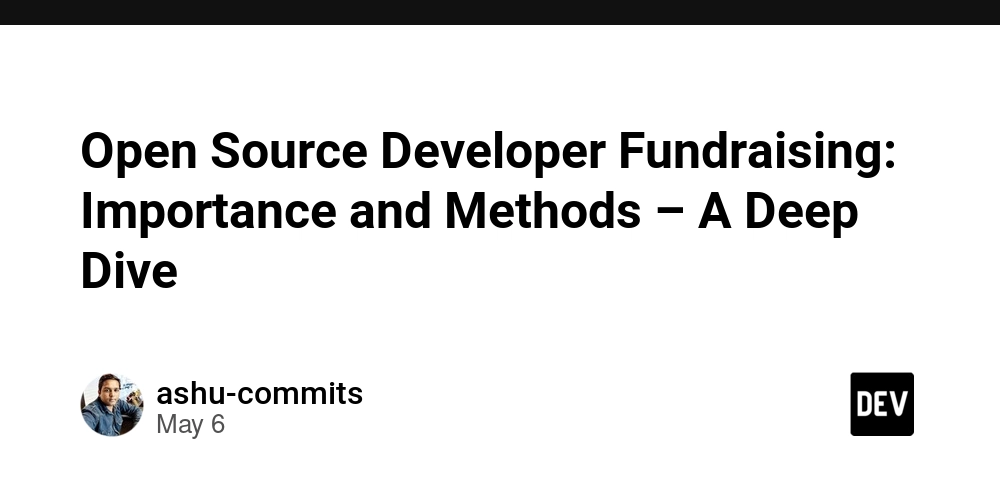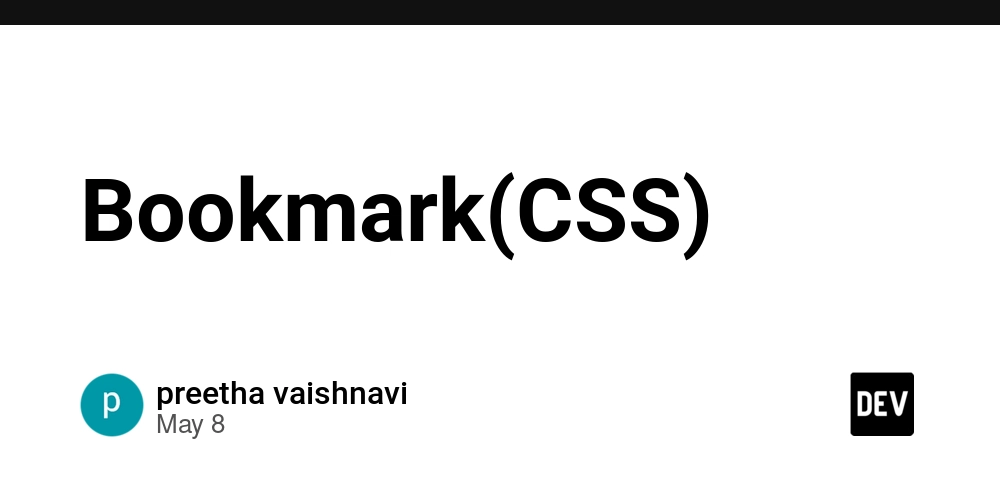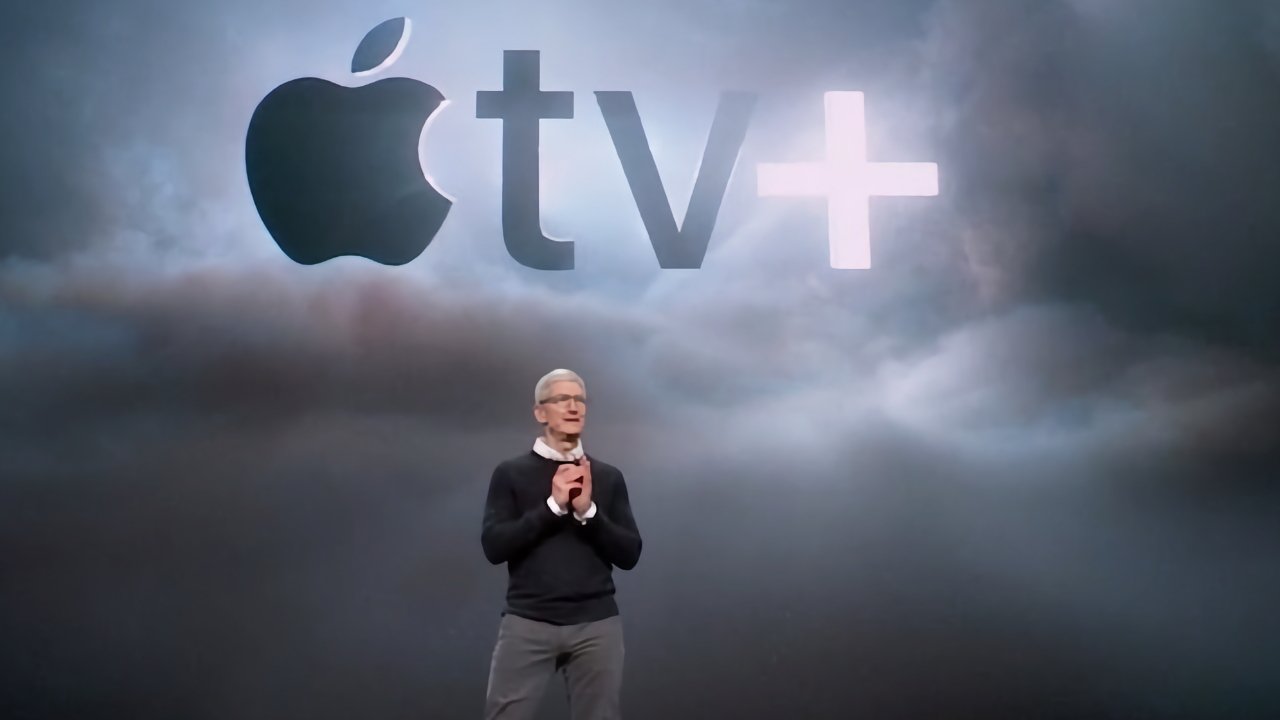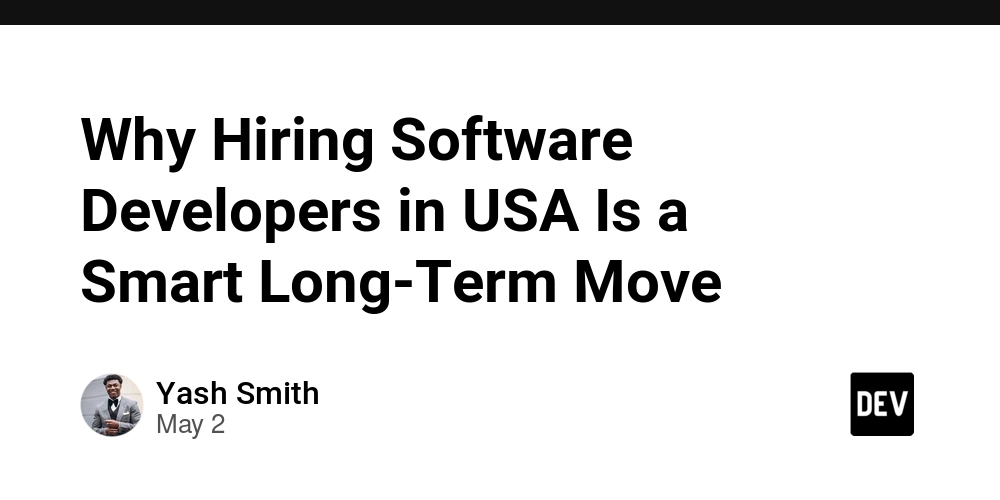Open Source Developer Fundraising: Importance and Methods – A Deep Dive
Abstract: This post explores the significance of fundraising for open-source developers and the various methods available to secure financial backing. We dive into the background of open-source contributions, explain the need for sustainable funding, and detail core methods such as crowdfunding platforms, corporate sponsorships, grants, service monetization, and merchandising. In addition, we include a table outlining key funding avenues, practical applications, and a bullet list of actionable tips. We also discuss challenges, limitations, and a future outlook on open-source fundraising, supported by industry insights and real-world examples. Introduction Open-source software drives today’s technology—from the kernel powering Linux to popular frameworks like React or Angular. Despite their immense popularity and utility, many open-source developers face a harsh reality: a lack of reliable financial support. Fundraising is essential not only to reward contributors for their efforts but also to sustain and innovate the projects that power modern infrastructure. In this post, we explain why open-source fundraising matters, describe the most effective methods, and provide insights on overcoming common challenges. By understanding these strategies and embracing collaborative funding models, developers and users alike can help build a more robust open-source ecosystem. Background and Context Open-source projects are built by communities coming together to create software that is freely available for everyone. However, while code may be open, the people behind it often work on a volunteer basis or struggle with inconsistent funding—resulting in: Developer Burnout: Without steady income, maintaining high-quality software can be unsustainable. Resource Limitations: Lack of funds limits hiring, technical support, and infrastructure improvement. Slow Innovation: Financial constraints can delay documentation upgrades, feature development, and security fixes. Historically, many developers sustained themselves through passion projects where their motivations were intrinsically driven by a community spirit. But as software becomes more complex and foundational for critical systems, the financial ecosystem must adapt. Fundraising methods have evolved from simple donations to structured programs like corporate sponsorships, crowdfunding, and even tokenized revenue strategies. A growing paradigm in sustainable open-source funding is often discussed under concepts like the License Token paradigm for OSS sustainability and bridging funding gaps as detailed in Bridging the Gap in OSS Funding. These initiatives aim to empower developers by creating innovative and equitable financial models. Core Concepts and Features Why Fundraising is Critical Fundraising is not simply about obtaining money; it is a strategic approach to ensure the longevity, stability, and growth of open-source projects. The key reasons include: Sustainability: Regular funding allows for a dedicated focus on maintenance and development. Quality Assurance: Funds help pay for security audits, enhanced documentation, and feature expansion. Community Growth: Transparent fundraising channels build trust and encourage broader community engagement. Methods of Fundraising There are several core methods open-source developers can leverage: Crowdfunding Platforms: Platforms such as Patreon, Ko-fi, and Open Collective let developers raise funds directly from users. Key advantages include transparency in fund usage and a steady revenue stream. Corporate Sponsorships: Companies that build on open-source projects can provide sponsorship support. Initiatives like GitHub Sponsors create a network where developers and corporations connect. This method helps recognize developers for the pivotal role they play. Grants and Donations: Many technology foundations and nonprofits, such as the Linux Foundation or the Mozilla Foundation, offer grants designed to support open-source development. Donations from individual users also add valuable support. Selling Services: Open-source developers often monetize their expertise by selling consulting services or offering customized features to enterprises relying on their projects. This method creates a dual income stream, which subsidizes the free software. Merchandising and Products: Unique merchandise such as branded T-shirts, stickers (e.g., from Sticker Mule), and other products enable developers to involve their community and generate extra revenue. The following table outlines the key features of each funding method: Funding Method Key Advantages Potential Challenges Crowdfunding Platforms Direct community support, transparency Inconsistent funding flow Corporate Sponsorships Long-term partnerships, steady financial backing Dependence on corporate goodwill Grants and Donations Access to large-scale philanthropy and foundations High

Abstract:
This post explores the significance of fundraising for open-source developers and the various methods available to secure financial backing. We dive into the background of open-source contributions, explain the need for sustainable funding, and detail core methods such as crowdfunding platforms, corporate sponsorships, grants, service monetization, and merchandising. In addition, we include a table outlining key funding avenues, practical applications, and a bullet list of actionable tips. We also discuss challenges, limitations, and a future outlook on open-source fundraising, supported by industry insights and real-world examples.
Introduction
Open-source software drives today’s technology—from the kernel powering Linux to popular frameworks like React or Angular. Despite their immense popularity and utility, many open-source developers face a harsh reality: a lack of reliable financial support. Fundraising is essential not only to reward contributors for their efforts but also to sustain and innovate the projects that power modern infrastructure.
In this post, we explain why open-source fundraising matters, describe the most effective methods, and provide insights on overcoming common challenges. By understanding these strategies and embracing collaborative funding models, developers and users alike can help build a more robust open-source ecosystem.
Background and Context
Open-source projects are built by communities coming together to create software that is freely available for everyone. However, while code may be open, the people behind it often work on a volunteer basis or struggle with inconsistent funding—resulting in:
- Developer Burnout: Without steady income, maintaining high-quality software can be unsustainable.
- Resource Limitations: Lack of funds limits hiring, technical support, and infrastructure improvement.
- Slow Innovation: Financial constraints can delay documentation upgrades, feature development, and security fixes.
Historically, many developers sustained themselves through passion projects where their motivations were intrinsically driven by a community spirit. But as software becomes more complex and foundational for critical systems, the financial ecosystem must adapt. Fundraising methods have evolved from simple donations to structured programs like corporate sponsorships, crowdfunding, and even tokenized revenue strategies.
A growing paradigm in sustainable open-source funding is often discussed under concepts like the License Token paradigm for OSS sustainability and bridging funding gaps as detailed in Bridging the Gap in OSS Funding. These initiatives aim to empower developers by creating innovative and equitable financial models.
Core Concepts and Features
Why Fundraising is Critical
Fundraising is not simply about obtaining money; it is a strategic approach to ensure the longevity, stability, and growth of open-source projects. The key reasons include:
- Sustainability: Regular funding allows for a dedicated focus on maintenance and development.
- Quality Assurance: Funds help pay for security audits, enhanced documentation, and feature expansion.
- Community Growth: Transparent fundraising channels build trust and encourage broader community engagement.
Methods of Fundraising
There are several core methods open-source developers can leverage:
Crowdfunding Platforms:
Platforms such as Patreon, Ko-fi, and Open Collective let developers raise funds directly from users. Key advantages include transparency in fund usage and a steady revenue stream.Corporate Sponsorships:
Companies that build on open-source projects can provide sponsorship support. Initiatives like GitHub Sponsors create a network where developers and corporations connect. This method helps recognize developers for the pivotal role they play.Grants and Donations:
Many technology foundations and nonprofits, such as the Linux Foundation or the Mozilla Foundation, offer grants designed to support open-source development. Donations from individual users also add valuable support.Selling Services:
Open-source developers often monetize their expertise by selling consulting services or offering customized features to enterprises relying on their projects. This method creates a dual income stream, which subsidizes the free software.Merchandising and Products:
Unique merchandise such as branded T-shirts, stickers (e.g., from Sticker Mule), and other products enable developers to involve their community and generate extra revenue.
The following table outlines the key features of each funding method:
| Funding Method | Key Advantages | Potential Challenges |
|---|---|---|
| Crowdfunding Platforms | Direct community support, transparency | Inconsistent funding flow |
| Corporate Sponsorships | Long-term partnerships, steady financial backing | Dependence on corporate goodwill |
| Grants and Donations | Access to large-scale philanthropy and foundations | Highly competitive, limited opportunities |
| Selling Services | Monetization of expertise, dual revenue generation | Balancing project work with service delivery |
| Merchandising and Products | Community engagement, diversified revenue stream | Requires marketing and production investment |
Additional Key Concepts
- Transparency: Open communication about how funds are spent builds trust.
- Community Involvement: Engaging users and companies in fundraising methods reinforces the collaborative spirit of open source.
- Sustainability: Long-term planning is essential to pivot from donation-based models to systems that ensure regular, predictable income.
Applications and Use Cases
Open-source fundraising is more than a financial strategy—it is a model that impacts multiple sectors. Here are some practical use cases:
Case Study 1: Crowdfunding Success
A popular open-source framework faced maintenance challenges due to dwindling volunteer efforts. By transitioning to a crowdfunding model via Patreon, the project secured a recurring monthly income. This funding:
- Enabled the hiring of part-time developers
- Improved documentation and user support
- Accelerated new feature releases
Case Study 2: Corporate Sponsorship in Action
A widely used open-source library relied on contributions from large tech corporations that benefit from its ecosystem. Through GitHub Sponsors, it secured long-term sponsorships. This model not only stabilized the project's finances but also helped in building a vibrant ecosystem where both developers and companies contributed to innovation.
Case Study 3: Monetization via Services and Merchandise
An open-source project offering state-of-the-art networking tools combined donations, consulting services, and merchandise sales. Offering custom implementations and branded products allowed the developer to overcome funding inconsistencies. Their strategy is detailed further in the open-source project revenue strategies guide.
Challenges and Limitations
Despite the potential benefits, open-source funding is not without its challenges:
- Inconsistent Revenue Streams: Relying solely on donations or crowdfunding can lead to unpredictable monthly income, making long-term planning difficult.
- Balancing Act: Developers need to ensure that fundraising activities do not distract from the core project work.
- Corporate Responsibility Gap: Even though companies benefit significantly from free, open-source projects, many do not contribute financially.
- Community Skepticism: Some community members may worry that monetization will lead to corporate influence or compromise the open nature of projects.
- Technical Barriers: Implementing transparent payment tracking and allocation systems requires technical investment and careful planning.
For a more detailed discussion on financial obstacles, consider reading about the open source funding challenges.
Future Outlook and Innovations
The future of open-source fundraising could be shaped by new trends and digital innovations, including blockchain and tokenized incentives:
Blockchain Integration
Blockchain technology presents a promising avenue for open-source funding. Tokenization could enable:
- Micro-donations: Facilitating seamless, small-value contributions from a global user base.
- Transparency of Transaction: Blockchain’s immutability guarantees that funds are used properly.
- Decentralized Governance: Allowing communities to vote on spending priorities and project direction.
For instance, several projects are emerging under initiatives such as license-token-empowering-open-source-creators, where blockchain is used to streamline open-source fundraising.
Expanding Sponsorship Models
As open-source projects gain recognition, traditional corporations may re-examine their responsibilities. Future agreements could see more structured corporate funding models, where companies directly sponsor developers. This alignment of interests ensures that the software remains high quality and continuously innovated upon.
Diversification of Revenue Streams
Developers may increasingly combine funding methods to mitigate risks. A diversified approach—merging crowdfunding with grants and service monetization—creates a more resilient revenue model. This strategic mix not only stabilizes income but also boosts community interaction and trust.
Policy and Legal Landscape
The increasing reliance on open source for critical infrastructure may prompt policymakers to support these projects through regulation and subsidies. Public initiatives, similar to grants provided to scientific research, could extend to open-source development. This evolution may pave the way for new legal frameworks that protect developer incomes and promote innovation.
Summary
Fundraising is a cornerstone of sustainable open-source development. By employing diverse funding channels—crowdfunding, corporate sponsorship, grants, service monetization, and merchandising—developers can secure the financial resources necessary to maintain and grow their projects. While challenges such as inconsistent revenue and community concerns persist, emerging trends like blockchain integration and diversified revenue streams offer a hopeful future.
The table below summarizes key funding methods:
| Funding Method | Advantages | Challenges |
|---|---|---|
| Crowdfunding Platforms | Direct user support, transparency | Unpredictable income |
| Corporate Sponsorships | Long-term financial security, recognition | Dependence on corporate goodwill |
| Grants and Donations | Access to philanthropic funds, no commercial strings | High competition for funds |
| Selling Services | Monetizing expertise, multiple revenue sources | Time management issues |
| Merchandising | Community engagement, diversified income | Requires marketing efforts |
Below is a bullet list of actionable tips for developers seeking to secure funding:
- Build a transparent budget: Clearly communicate how funds will be allocated.
- Engage your community: Keep contributors updated with regular progress reports.
- Explore multiple channels: Combine crowdfunding, sponsorships, grants, and merchandising.
- Leverage success stories: Learn from case studies and industry leaders.
- Adopt new technologies: Consider blockchain solutions for improved transparency and efficiency.
By addressing challenges head-on and embracing innovative funding models, the open-source community can continue driving technological advances while ensuring that developers are rewarded for their invaluable contributions.
Additional Resources
For further insights and practical guides, check out these authoritative resources:
- License Token: A New Paradigm for OSS Sustainability
- License Token: Bridging the Gap in OSS Funding
- License Token: Empowering Open Source Creators
- Open Source Funding Challenges
- Open Source Project Revenue Strategies
Furthermore, the broader technology community is actively discussing funding innovations on platforms like Dev.to. For example:
- License Token: A New Paradigm for OSS Sustainability
- Blockchain for Open Source Funding: A New Paradigm
- Open Source Funding Fueling Innovation and Sustainability
- Bridging the Earnings Gap for Open Source Developers
These resources provide further context and real-world examples for anyone interested in transforming the way open-source projects are funded.
Conclusion
Funding is the lifeblood of the open-source ecosystem. As technology becomes increasingly intertwined with everyday life, the stability and innovation of open-source software remain critical. Through a mix of crowdfunding, corporate sponsorships, grants, service monetization, and merchandising, developers can secure the steady support needed for continuous improvement and long-term project viability.
Understanding these funding methods and implementing diversified revenue strategies builds not only a robust financial foundation but also reinforces the collaborative community spirit. Embracing new trends—such as blockchain integration and innovative sponsorship models—promises to further empower open-source developers. Ultimately, every contribution, whether monetary or in kind, strengthens an ecosystem that millions depend on daily.
By uniting developers, corporations, and communities in tailored and transparent fundraising strategies, we ensure that the open-source model remains a cornerstone of modern technology—and that its future is as sustainable as it is innovative.
Let us work together towards a future where open-source development is rewarded, celebrated, and continuously fueled by the collective effort of communities and industry alike.








































































































































































![[The AI Show Episode 146]: Rise of “AI-First” Companies, AI Job Disruption, GPT-4o Update Gets Rolled Back, How Big Consulting Firms Use AI, and Meta AI App](https://www.marketingaiinstitute.com/hubfs/ep%20146%20cover.png)


























































































































![[DEALS] The Premium Python Programming PCEP Certification Prep Bundle (67% off) & Other Deals Up To 98% Off – Offers End Soon!](https://www.javacodegeeks.com/wp-content/uploads/2012/12/jcg-logo.jpg)














































































































-Mafia-The-Old-Country---The-Initiation-Trailer-00-00-54.png?width=1920&height=1920&fit=bounds&quality=70&format=jpg&auto=webp#)
-Nintendo-Switch-2---Reveal-Trailer-00-01-52.png?width=1920&height=1920&fit=bounds&quality=70&format=jpg&auto=webp#)























_Sergey_Tarasov_Alamy.jpg?width=1280&auto=webp&quality=80&disable=upscale#)





























































































![Instacart’s new Fizz alcohol delivery app is aimed at Gen Z [U]](https://i0.wp.com/9to5mac.com/wp-content/uploads/sites/6/2025/05/Instacarts-new-Fizz-alcohol-delivery-app-is-aimed-at-Gen-Z.jpg?resize=1200%2C628&quality=82&strip=all&ssl=1)




















![Beats Studio Pro Wireless Headphones Now Just $169.95 - Save 51%! [Deal]](https://www.iclarified.com/images/news/97258/97258/97258-640.jpg)































































































